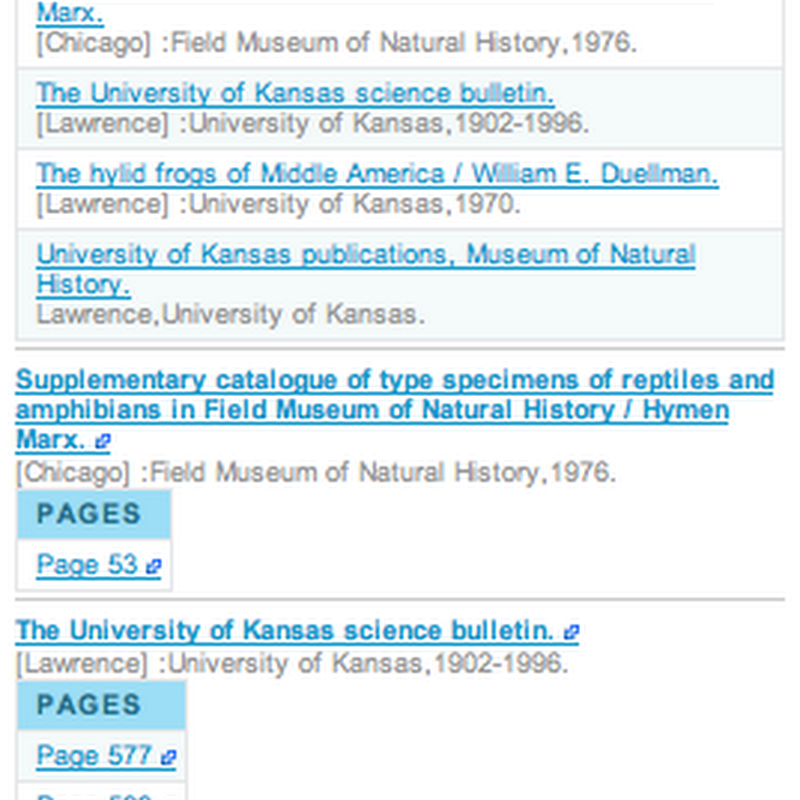
This week seems to be API week. The Encyclopedia of Life API Beta Test has been out since August 12th.

This week seems to be API week. The Encyclopedia of Life API Beta Test has been out since August 12th.
Chris Freeland tweeted about the presentation he gave to a recent BHL meeting, the slides for which are reproduced below: BHL Tech Report View more presentations from chrisfreeland.It makes interesting viewing. From my own (highly biased) perspective slide 10 is especially interesting, in that BioStor, my tool for locating articles in BHL is the 8th largest source of traffic for BHL - 2.46% of visitors to BHL come via BioStor.

One thing about the Encyclopedia of Life which bugs me no end is the awful way it displays the bibliography generated from the Biodiversity Heritage Library (BHL). The image on the right shows the bibliography for the frog Hyla rivularis Taylor, 1952. It's one long, alphabetical list of pages. How can a user make sense of this?

One assumption I've been making so far is that when people search for information on an organism using its scientific name, Wikipedia will dominate the search results (see my earlier post for an example of this assumption). I've decided to quantify this by doing a little experiment. I grabbed the Mammal Species of the World taxonomy and extracted the 5416 species names. I then used Google's AJAX search API to look up each name in Google.

Time for more half-baked ideas. There's been a lot of discussion on Twitter about EOL, Linked Data (sometimes abbreviated LOD), and Wikipedia. Pete DeVries (@pjd) is keen on LOD, and has been asking why TDWG isn't playing in this space. I've been muttering dark thoughts about EOL, and singing the praises of Wikipedia.
Over on the EOL blog is a summary of a meeting Visualizing the Evolutionary Tree of Life. This sounds like it was a fun meeting, but part of me is suffering from déjà vu. Our community has tossed this subject around for a while now.
Finally submitted (two days late) a manuscript for the BMC Bioinformatics Special Issue on Biodiversity Informatics organised by Neil Sarkar and sponsored by EOL and CBOL. The manuscript, entitled "bioGUID: resolving, discovering, and minting identifiers for biodiversity informatics" describes my bioGUID project. If you are interested made pre-print available at Nature Precedings (hdl:10101/npre.2009.3079.1).

OK, really must stop avoiding what I'm supposed to be doing (writing a paper, already missed the deadline), but continuing the theme of LSIDs and short URLs, it occurs to me that LSIDs can be seen as a disaster (don't work in webrowsers, nobody else uses them, hard to implement, etc.) or an opportunity.
The latest post on the EOL blog (Biodiversity in a rapidly changing world) really, really annoys me. It claims thatNope, I suggest it demonstrates just how limited EOL is. If I view the page for the red lionfish I get an out of date map from GBIF that shows a very limited distribution, and doesn't show the introductions in Florida and the Bahamas (I have to wade through text to find reference to the Florida introduction, and the page doesn't
Watch CBS Videos OnlineCBS News Sunday Morning Segment on the EOL. All fun stuff (Paddy skewering the interviewer who fails to recognise an echidna), but still long on promises and short on actual product.